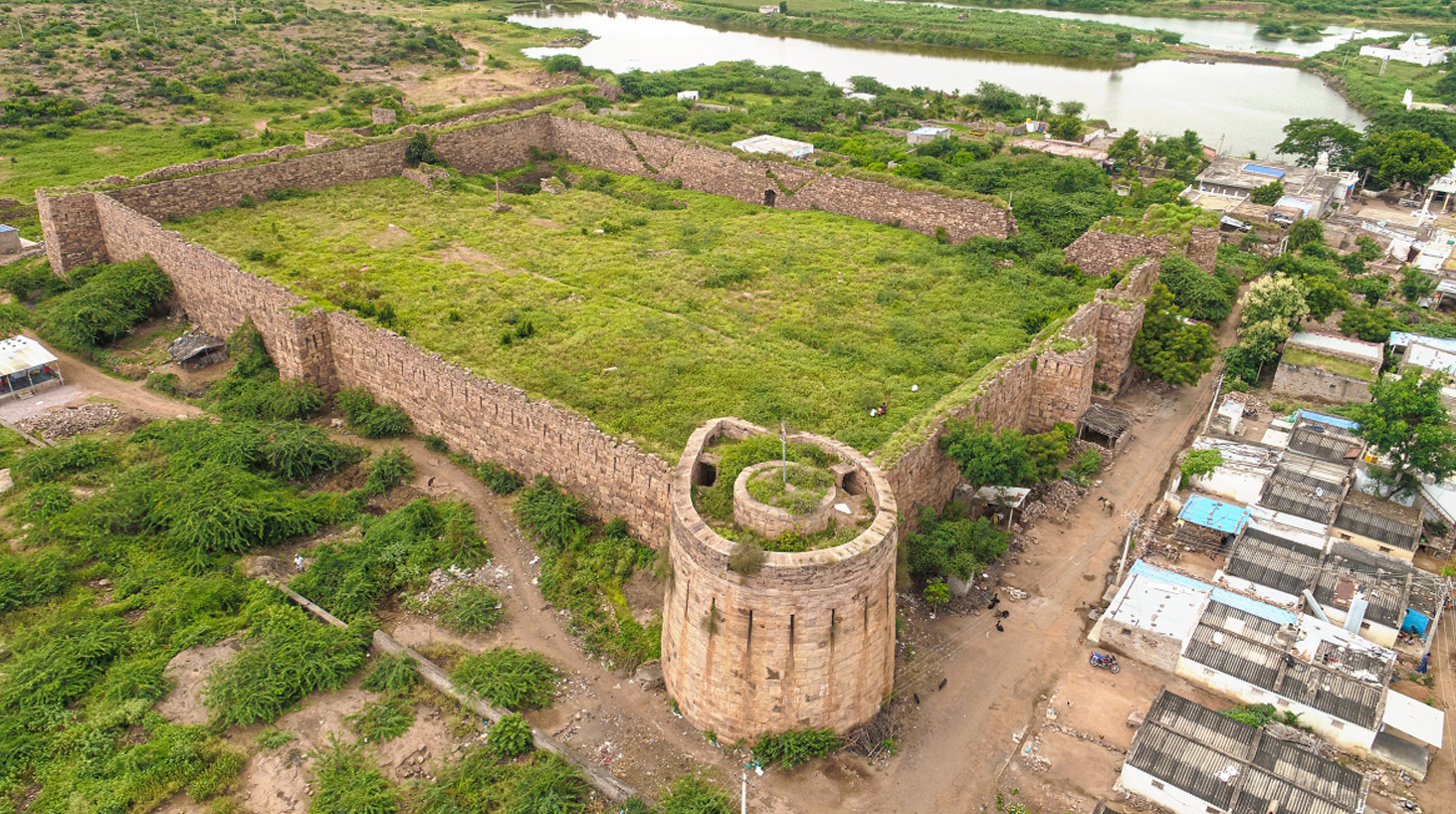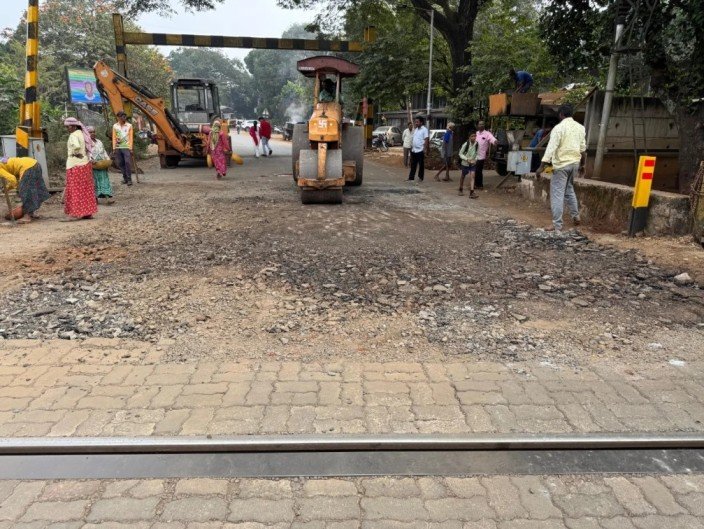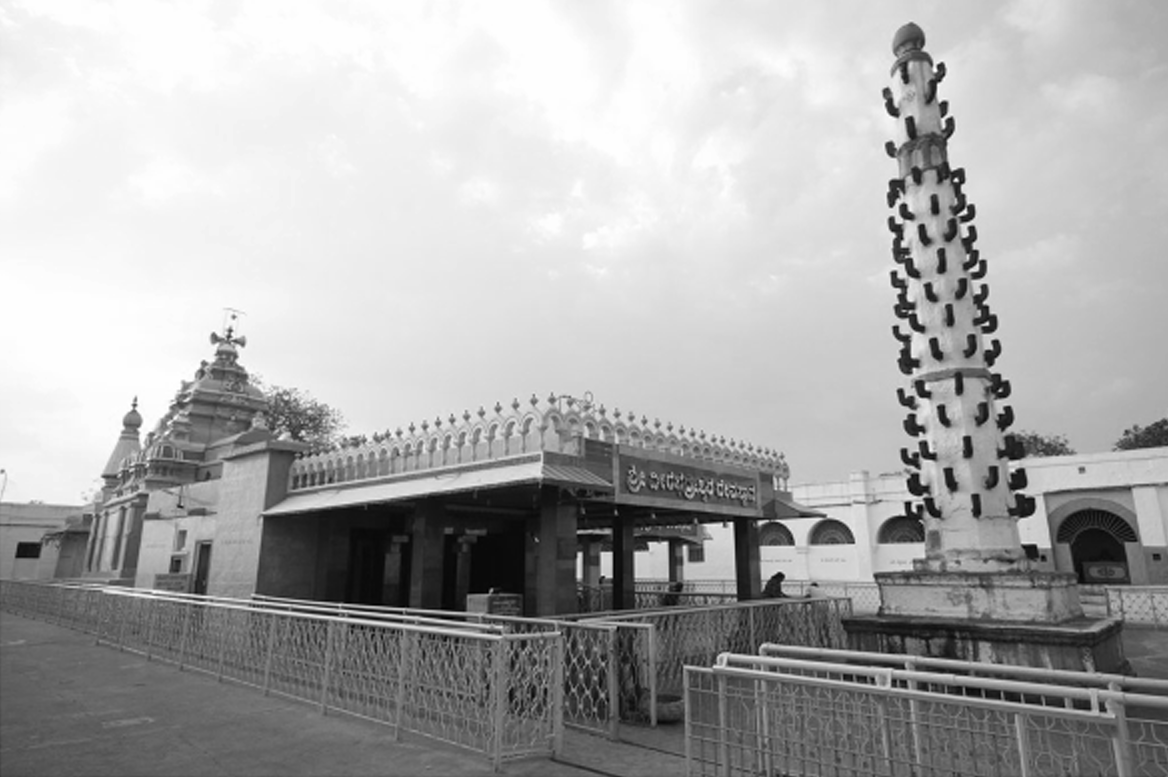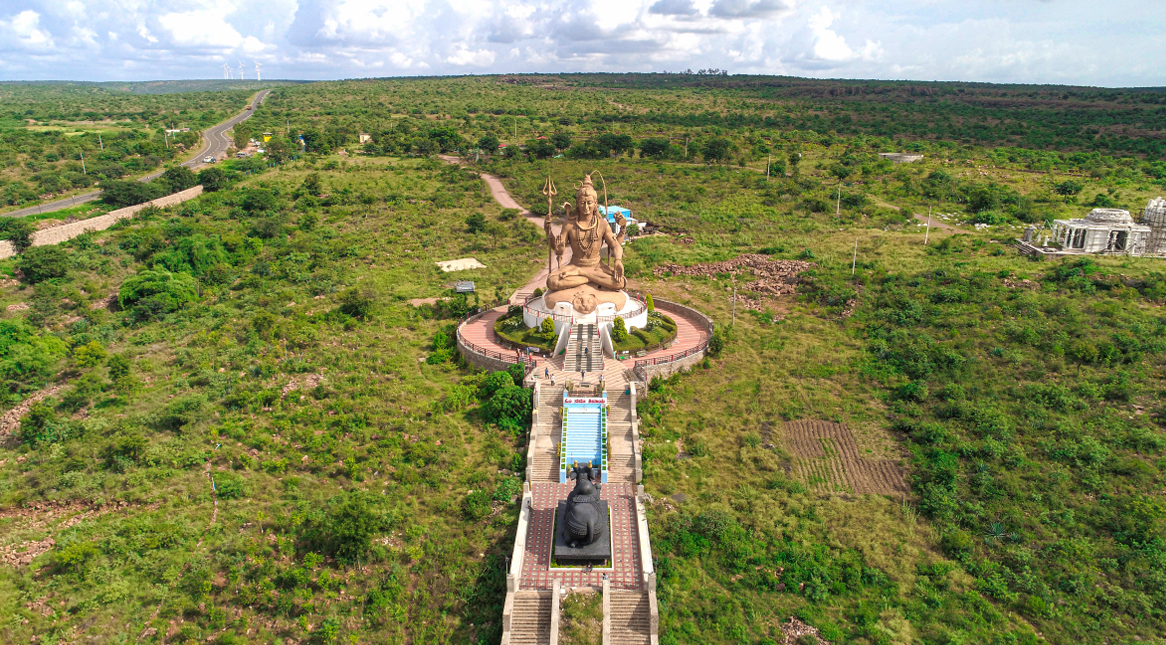

Torgal Fort, nestled in Ramdurg taluk of Belagavi district, is an underrated yet historically rich destination that deserves a place on every heritage explorer’s list. Located around 10 km from Ramdurg town, the journey to the fort takes visitors through scenic sugarcane fields and rugged terrain, building anticipation for the architectural marvel ahead.
For Reference: https://belagavitourism.com/destination/torgal-fort/
Perched atop a hill, the fort is built using distinctive yellow and red Shahabadi stones, giving it a unique and striking appearance. Its design is a testament to ancient defensive planning, featuring a massive moat — 20 feet deep and 15 feet wide — and surrounded on three sides by rocky hills, with the tranquil Malaprabha River flowing nearby.
Visitors can spot stone inscriptions in Persian and Kannada, dating back to the 16th century. Of the seven original fortifications, five are still intact, along with various hideouts, watchtowers, and the remnants of large cannons. These details reflect the fort’s once-critical role in regional defense and governance.
Torgal Fort is not just about stone walls and strategy—it’s filled with local legends and spiritual significance. A notable tale is that of Mallamma, a pregnant woman who is believed to have taken samadhi for the prosperity of the village. Her memorial lies on the fort’s northern side. The complex also houses the Bhootanatha Temple, with its Chalukya-style architecture, and an old mosque, showcasing the region’s religious harmony.
Historically, the fort was ruled by nine generations of Shindhe kings, with Narasojirao Shindhe being the last, reigning until 1949. Even today, his descendants reside nearby, and Sanjay Singh, the heir, is affectionately regarded as the local maharaja. Torgal also played a key role in Chhatrapati Shivaji Maharaj’s military strategy, as he sent his troops here to expand Maratha influence in the region.
Torgal Fort is a hidden gem for history lovers, photographers, and curious travelers. Its blend of architecture, mythology, and royal legacy offers a unique experience, making it a must-visit site among Karnataka’s forts.
Best time to visit: October to February – for cooler weather and clear hill views.
Travel tips: Wear comfortable trekking shoes, carry water, and explore with a local guide for historical context.







